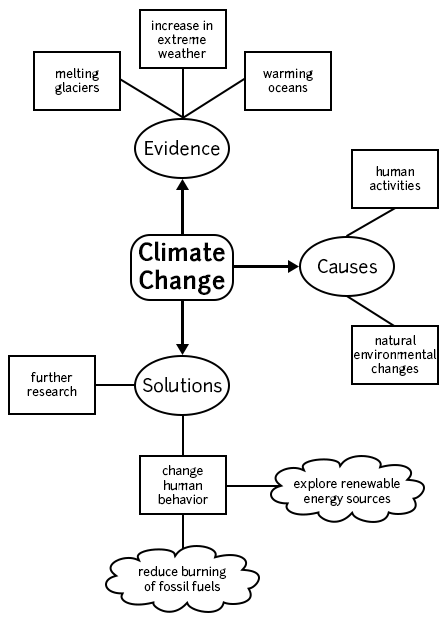Essential Details
| Interaction Type | People | Time | Stakes |
|---|---|---|---|
|
★ Learner-to-Learner ✖ Learner-to-Instructor ★ Learner-to-Content |
★ Individual ★ With Others |
★ Asynchronous ✖ Synchronous |
★ Low-Stakes ✖ High-Stakes |
Description
Students draw a concept or mind map to organize, differentiate, and explain concepts. Concept maps can be charts, graphical organizers, and flowcharts.
Students can identify clearly what they have learned or what they are planning.
Sample Procedure
- Select the concept, skill, or topic for concept mapping.
- Provide an example.
- Provide materials and tutorials. Suggest that they start in the center or top. Then, students break the whole into smaller components and depict these components around the focus. Urge students to represent each idea with limited words.
- Ask students to share their work. Conduct a discussion about how they organized a concept.
Example
Canvas Discussion with "Users must post before seeing replies" selected.
Purpose
Organize evidence, causes, and solutions of climate change.
Tasks
- Sketch a concept map with the words "climate change" in the center.
- Have at least three nodes from the center. Refer to the sample concept map below. Please do not copy the sample concept map.
- Add evidence, causes, and solutions, and another category.
- After you post your concept map, respond to another comparing and contrast your maps.
Options on How to Make your Concept Map
- Draw on paper, take a photo, and upload the file.
- Or, use PowerPoint, Visio, or another program to draw your map and export it as an image file.
Sample Concept Map
"Concept Maps" by the University of North Carolina, Chapel Hill shared with CC 4.0
Bloom's level
The level indicates this activity’s place within Bloom’s Taxonomy of learning (Cognitive Domain). Higher-levels contains lower-levels within it.
| Level | Action |
|---|---|
|
Sixth |
Create |
|
Fifth |
Evaluate |
|
★ Fourth |
★ Analyze |
| Third | Apply |
| Second | Understand |
| First | Remember |
Verb
Organize
Tools
- Canvas Discussion
- Canvas Assignment
- Timeline by Knight Lab
- Infogram
- Microsoft PowerPoint
- Microsoft Visio
Teaching Goal
Practice New Skills or Concepts
Sources
Concept Maps. (n.d.). Retrieved November 15, 2019, from Learning Center website: https://learningcenter.unc.edu/tips-and-tools/using-concept-maps/
The following book is available at the CETL Library to borrow:
Silberman, M. (1996). Active Learning: 101 Strategies to Teach Any Subject (1 edition). Boston: Pearson.
